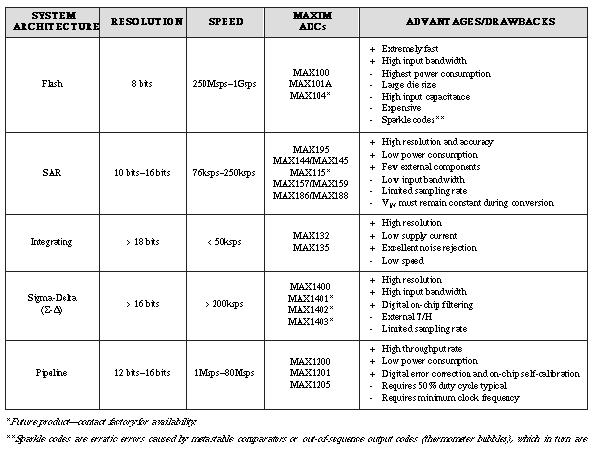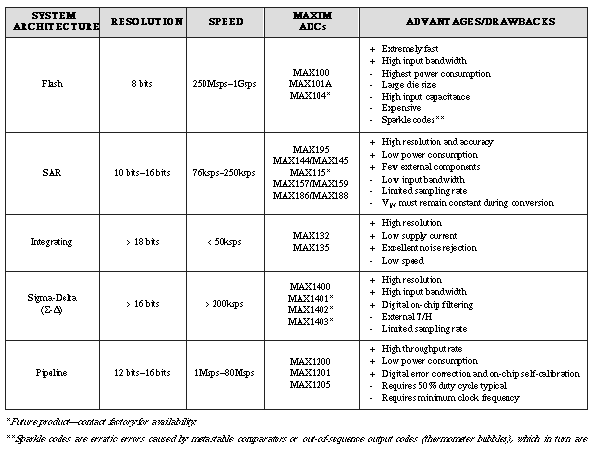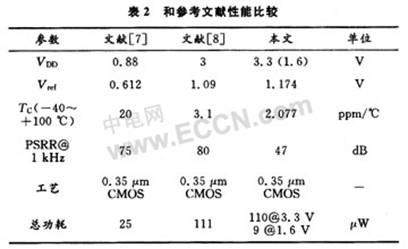介绍
Go 的并发原语可以轻松构建流数据管道,从而高效利用 I/O 和多个 CPU。 本文展示了此类pipelines的示例,强调了操作失败时出现的细微之处,并介绍了干净地处理失败的技术。
什么是pipeline?
pipeline在Go中并没有书面的定义,只是众多并发程序中的一种。非正式地,pipeline由一系列stage组成。每个stage是运行着同一个function的协程组。在每个stage,协程们
通过inbound channel从上游获取数据
在data上进行运算,通常会产生新的值
通过outbound channel向下游发送数据
每个Stage都有数个inbound channel和outbound channel,除了第一个和最后一个Stage,分别只有outbound和inbound channel。第一个Stage通常叫做Source或Producer。最后一个Stage通常叫做Sink或Consumer。
我们将从一个简单的示例pipeline开始来解释这些想法和技术。 稍后,我们将提供一个更实际的例子。
Squaring numbers 平方数
考虑一个有着三个阶段的流水线。
第一阶段,gen,是个将整数列表转换为一个发射列表中整数的channel的函数。gen函数启动一个go routine,用来发送channel中的整数,然后当所有的整数都被发出后,将channel关闭:
func gen(nums ...int) <-chan int {
out := make(chan int)
go func() {
for _, n := range nums {
out <- n
}
close(out)
}()
return out
}
第二阶段,sq从上面的channel中接收数据,返回一个发射对应整数平方数的channel。当inbound channel关闭后,并且这一阶段将所有的value发送到下游后,再将这个outbound channel关闭
func sq(in <-chan int) <-chan int {
out := make(chan int)
go func() {
for n := range in {
out <- n * n
}
close(out)
}()
return out
}
main函数组织整个pipeline,并且运行最终的stage:从第二个stage中接收数据然后逐个打印,直到channel被关闭
func main() {
// Set up the pipeline
c := gen(2, 3)
out := sq(c)
// Consume the output
// 4
fmt.Println(<-out)
// 9
fmt.Println(<-out)
}
既然sq的inbound channel和outbound channel类型相同,我们可以将其进行任意数量的组合。我们还可以将main函数重写为循环,就像在其他Stage中做的那样一样。
func main() {
// Set up the pipeline and consume the output.
for n := range sq(sq(gen(2, 3))) {
fmt.Println(n) // 16 then 81
}
}
扇入和扇出
许多函数可以从一个channel中获取数据直到channel被关闭,这被叫做扇出。这提供了一种在worker之间分配工作以并行化 CPU 使用和 I/O 的方法。
一个函数可以通过将多个input channel多路复用到同一个channel,当所有的channel关闭时,该多路复用channel才关闭。从而达到从多个input获取数据并处理,直到所有input channel都关闭才停止的效果。这叫做扇入。
我们可以将我们的流水线改为运行两个sq,每个都从相同的channel读取数据。我们引入一个新的函数merge,来做扇入的工作
func main() {
in := gen(2, 3)
// Distribute the sq work across two goroutines that both read from in.
c1 := sq(in)
c2 := sq(in)
// Consume the merged output from c1 and c2.
for n := range merge(c1, c2) {
fmt.Println(n) // 4 then 9, or 9 then 4
}
}
merge函数通过对每个channel开启一个协程,把数据拷贝到另一个out channel中,实现将channel列表转换为一个channel的效果。当所有send操作完成后,再将out channel关闭。
向一个已经关闭上的channel发送数据会导致panic,所以保证发送完所有再关闭channel至关重要。sync.WaitGroup提供了一个简单地方式来编排这个同步
func merge(cs ...<-chan int) <-chan int {
var wg sync.WaitGroup
out := make(chan int)
// Start an output goroutine for each input channel in cs. output
// copies values from c to out until c is closed, then calls wg.Done
output := func(c <-chan int) {
for n := range c {
out <- n
}
wg.Done()
}
wg.Add(len(cs))
for _, c := range cs {
go output(c)
}
// Start a goroutine to close out once all the output goroutines are
// done. This must start after the wg.Add call.
go func() {
wg.Wait()
close(out)
}()
return out
}
短暂的停顿
我们的pipeline函数有这样的模式:
当发送任务结束后,关闭发送output channel
直到input channel关闭前,一直从input channel中接收消息
这个模式下,每个阶段都可以用协程+for循环的模式来书写,保证每个数据发送到下游后再关闭所有协程。
但是在实际的pipeline中,阶段并不总是接收所有来自inbound channel的数据。通常,如果inbound的值出现了错误,pipeline会提前退出。 在任何一种情况下,接收者都不必等待剩余值到达,并且我们希望fast fail(较早阶段的Stage尽早停止后期Stage不需要的值)。
在我们的示例pipeline中,如果一个Stage未能消费所有inbound值,则尝试计算后并发送这些值的 goroutine 将无限期阻塞:
// Consume the first value from the output.
out := merge(c1, c2)
fmt.Println(<-out) // 4 or 9
return
// Since we didn't receive the second value from out,
// one of the output goroutines is hung attempting to send it.
}
这就导致了资源泄漏:协程消耗内存、运行资源,并且在协程栈内的golang堆引用导致垃圾无法回收。协程只能自己退出,不能由垃圾回收机制回收。
即使下游的Stage无法接收所有inbound value,我们也需要把上游的协程退出。如果把上游的协程改为有buffer的,可以解决上面的问题。如果Buffer中还有空间,则发送操作可以立刻完成
c := make(chan int, 2) // buffer size 2 c <- 1 // succeeds immediately c <- 2 // succeeds immediately c <- 3 // blocks until another goroutine does <-c and receives 1
当要发送的数目可以在channel创建时知道时,buffer可以简化代码。举个例子,让我们来使用buffer channel,不开辟新的协程来重写gen方法:
func gen(nums ...int) <-chan int {
out := make(chan int, len(nums))
for _, n := range nums {
out <- n
}
close(out)
return out
}
在我们的pipeline中,我们就需要在merge方法中使用的channel添加buffer:
func merge(cs ...<-chan int) <-chan int {
var wg sync.WaitGroup
out := make(chan int, 1) // enough space for the unread inputs
// ... 其余的没有变更 ...
尽管上面这个方案修复了阻塞的问题,但它是很差的方案。这里有一个对1的硬编码,这太脆弱了?你真的能预料到有多少个值不能被正常发送吗?一旦两个值不能正常发送,你的协程又阻塞了。
作为替代,我们需要给下游阶段提供一个机制,知会下游阶段,发送者已经停止发送了。
Explicity cancellation 显示取消
当main函数决定不从out处接收所有数据,而是退出时,它必须知会上游阶段的协程放弃接下来的发送。它通过向一个名叫done的channel发送数据来完成这个动作。因为发送方有两个,所以 向done发送两次数据。
func main() {
in := gen(2, 3)
// Distribute the sq work across two goroutines that both read from in.
c1 := sq(in)
c2 := sq(in)
// Consume the first value from output.
done := make(chan struct{}, 2)
out := merge(done, c1, c2)
fmt.Println(<-out) // 4 or 9
// Tell the remaining senders we're leaving.
done <- struct{}{}
done <- struct{}{}
}
发送到out channel的发送者把原来的逻辑替换成一个select操作,select或者发送一个数据,抑或从done处接收到数据。因为done中数据值的类型根本不重要,主要是接收到值这个事件本身很重要,所以donechannel的类型时struct {}。output循环继续在inboundchannel上执行,所以上游的阶段并没有被阻塞。(我们稍后会讨论如何让循环迅速返回。)
func merge(done <-chan struct{}, cs ...<-chan int) <-chan int {
var wg sync.WaitGroup
out := make(chan int)
// Start an output goroutine for each input channel in cs. output
// copies values from c to out until c is closed or it receives a value
// from done, then output calls wg.Done.
output := func(c <-chan int) {
for n := range c {
select {
case out <- n:
case <-done:
}
}
wg.Done()
}
// ... the rest is unchanged ...
这个方法有一个问题:每一个下游接收者都需要知道可能阻塞的上游发送者总数。维护它们的数目,是一个琐碎又容易出错的事情。
我们需要一个机制来让不可知的、无界的发送协程来停止发送到下游的值。在Go,我们可以通过关闭channel来完成这件事,因为在已经关闭的channel上执行receive操作,会立刻返回该元素的零值。
这说明main函数可以简单地通过关闭donechannel来让所有的发送者不阻塞。关闭操作是一个高效的广播。我们把pipeline中的每个函数都接受done作为参数,并把done在defer语句中关闭, 这样,如果在main函数中返回,都会通知pipeline中的阶段退出。
func main() {
// Set up a done channel that's shared by the whole pipeline,
// and close that channel when this pipeline exits, as a signal
// for all the goroutines we started to exit.
done := make(chan struct{})
defer close(done)
in := gen(done, 2, 3)
// Distribute the sq work across two goroutines that both read from in.
c1 := sq(done, in)
c2 := sq(done, in)
// Consume the first value from output.
out := merge(done, c1, c2)
fmt.Println(<-out) // 4 or 9
// done will be closed by the deferred call.
}
现在当donechannel关闭后,接收到close信息的阶段,都可以直接退出了。merge函数中的outout协程可以不从inboundchannel中取数据直接退出,因为它知道,上游的发送sq,接收到close信息,也会直接退出。output通过defer语句来保证wg.Done()一定被调用。(译者注:来关闭out channel)
func merge(done <-chan struct{}, cs ...<-chan int) <-chan int {
var wg sync.WaitGroup
out := make(chan int)
// Start an output goroutine for each input channel in cs. output
// copies values from c to out until c or done is closed, then calls
// wg.Done.
output := func(c <-chan int) {
defer wg.Done()
for n := range c {
select {
case out <- n:
case <-done:
return
}
}
}
// ... the rest is unchanged ...
相似的,当接收到close信号时,sq函数也可以立刻返回。sq通过defer语句来保证outchannel一定被关闭。
这是给构建pipeline的一些指导:
当所有的发送操作完成后,关闭outbound channel
如果发送发不阻塞,或是channel没有关闭,接收者会一直从channel中接收数据
Pipeline通过如下两个方式来解除发送者的阻塞
确保channel的buffer足够大
显示知会发送者,接收者已经放弃接收
Digesting a tree 对树进行摘要
让我们来考虑一个更实际的pipeline
MD5 是一种消息摘要算法,可用作文件校验和。 命令行实用程序 md5sum 打印文件列表的摘要值。
% md5sum *.go d47c2bbc28298ca9befdfbc5d3aa4e65 bounded.go ee869afd31f83cbb2d10ee81b2b831dc parallel.go b88175e65fdcbc01ac08aaf1fd9b5e96 serial.go
我们的示例程序类似于 md5sum,但将单个目录作为参数并打印该目录下每个常规文件的摘要值,按路径名排序。
% go run serial.go . d47c2bbc28298ca9befdfbc5d3aa4e65 bounded.go ee869afd31f83cbb2d10ee81b2b831dc parallel.go b88175e65fdcbc01ac08aaf1fd9b5e96 serial.go
我们的主函数调MD5All这个辅助函数,返回路径名和摘要值的map,main函数再将它们排序打印
func main() {
// Calculate the MD5 sum of all files under the specified directory,
// then print the results sorted by path name.
m, err := MD5All(os.Args[1])
if err != nil {
fmt.Println(err)
return
}
var paths []string
for path := range m {
paths = append(paths, path)
}
sort.Strings(paths)
for _, path := range paths {
fmt.Printf("%x %s
", m[path], path)
}
}
MD5All函数是我们讨论的重点。在如下串行化的实现中,没有使用并发技术,只是简单对文件进行了遍历
// MD5All reads all the files in the file tree rooted at root and returns a map
// from file path to the MD5 sum of the file's contents. If the directory walk
// fails or any read operation fails, MD5All returns an error.
func MD5All(root string) (map[string][md5.Size]byte, error) {
m := make(map[string][md5.Size]byte)
err := filepath.Walk(root, func(path string, info os.FileInfo, err error) error {
if err != nil {
return err
}
if !info.Mode().IsRegular() {
return nil
}
data, err := ioutil.ReadFile(path)
if err != nil {
return err
}
m[path] = md5.Sum(data)
return nil
})
if err != nil {
return nil, err
}
return m, nil
}
并行计算摘要
在并行的解法中,我们将MD5All分割为两个阶段的pipeline。第一个阶段,sumFiles,遍历文件树,针对每个文件,在新的协程中计算摘要,然后把结果发送到channel中,这是result的类型
type result struct {
path string
sum [md5.Size]byte
err error
}
sumFiles返回两个channel:一个是result channel,另一个是filepath.Walk中产生的错误。walk函数针对每个文件启动一个新的协程来处理,然后检查donechannel。如果done已经被关闭,walk函数会立刻停止:
func sumFiles(done <-chan struct{}, root string) (<-chan result, <-chan error) {
// For each regular file, start a goroutine that sums the file and
// sends the result on c.
// Send the result of the walk on errc.
c := make(chan result)
errc := make(chan error, 1)
go func() {
var wg sync.WaitGroup
// If any error occurred, walk method will return
err := filepath.Walk(root, func(path string, info fs.FileInfo, err error) error {
if err != nil {
return err
}
if !info.Mode().IsRegular() {
return nil
}
wg.Add(1)
go func() {
data, err := ioutil.ReadFile(path)
select {
case c <- result{
path: path,
sum: md5.Sum(data),
err: err,
}:
case <-done:
}
wg.Done()
}()
// Abort the walk if done is closed.
select {
case <-done:
return errors.New("walk canceled")
default:
return nil
}
})
// Walk has returned, so all calls to wg.Add are done.
// Start a goroutine to close c once all the sends are done.
// No select needed here, since errc is buffered.
errc <- err
}()
return c, errc
}
MD5All从c中接收到摘要数据。当发生错误时,MD5All会迅速返回,通过defer语句来关闭donechannel
func MD5All(root string) (map[string][md5.Size]byte, error) {
// MD5All closes the done channel when it returns; it may do so before
// receiving all the values from c and errc.
done := make(chan struct{})
defer close(done)
c, errc := sumFiles(done, root)
m := make(map[string][md5.Size]byte)
for r := range c {
if r.err != nil {
return nil, r.err
}
m[r.path] = r.sum
}
if err := <-errc; err != nil {
return nil, err
}
return m, nil
}
有界的并行
parallel.go 中的 MD5All 实现为每个文件启动一个新的 goroutine。 在包含许多大文件的目录中,这可能会分配比机器上可用的内存更多的内存。
我们可以通过限制并行读取的文件数量来限制这些分配。 在新的解决方式中,我们通过创建固定数量的 goroutine 来读取文件来做到这一点。 我们的pipeline现在分为三个阶段:遍历树、读取并计算文件摘要以及收集摘要。
第一阶段 walkFiles 发射出文件树中常规文件的路径:
func walkFiles(done <-chan struct{}, root string) (<-chan string, <-chan error) {
paths := make(chan string)
errc := make(chan error, 1)
go func() {
// Close the paths channel after Walk returns.
defer close(paths)
// No select needed for this send, since errc is buffered.
errc <- filepath.Walk(root, func(path string, info os.FileInfo, err error) error {
if err != nil {
return err
}
if !info.Mode().IsRegular() {
return nil
}
select {
case paths <- path:
case <-done:
return errors.New("walk canceled")
}
return nil
})
}()
return paths, errc
}
第二阶段启动固定数量的协程来计算文件摘要,然后发送到c channel中
func digester(done <-chan struct{}, paths <-chan string, c chan<- result) {
for path := range paths {
data, err := ioutil.ReadFile(path)
select {
case c <- result{path, md5.Sum(data), err}:
case <-done:
return
}
}
}
和之前的示例不同,因为多个协程都在共享channel上发送数据,digester函数并没有关闭output channel。作为替代,当所有的digesters跑完之后,MD5All会关闭channel
// Start a fixed number of goroutines to read and digest files.
c := make(chan result)
var wg sync.WaitGroup
const numDigesters = 20
wg.Add(numDigesters)
for i := 0; i < numDigesters; i++ {
go func() {
digester(done, paths, c)
wg.Done()
}()
}
go func() {
wg.Wait()
close(c)
}()
这里也可以针对每个digester开启独立的channel,不过到时候就要对channel进行扇入处理。
最终阶段从c中取得所有结果,并且检查errc中的错误。此检查不能更早发生,因为在此之前,walkFiles 可能会阻塞:
(译者注:要保证检查errc的错误,发生在filePath.Walk启动后,done不会再次发送了,协程就不会退出)
m := make(map[string][md5.Size]byte)
for r := range c {
if r.err != nil {
return nil, r.err
}
m[r.path] = r.sum
}
// Check whether the Walk failed.
if err := <-errc; err != nil {
return nil, err
}
return m, nil
}
总结
本文介绍了在 Go 中构建流数据pipeline的技术。 处理此类pipeline中的故障很棘手,因为pipeline中的每个阶段可能会阻止尝试向下游发送值,并且下游阶段可能不再关心传入的数据。 我们展示了关闭通道如何向管道启动的所有 goroutine 广播“done”信号,并定义了正确构建管道的指南。
审核编辑:黄飞
-
Pipeline
+关注
关注
0文章
27浏览量
9294
原文标题:实例详解在Go中构建流数据pipeline的骚操作
文章出处:【微信号:magedu-Linux,微信公众号:马哥Linux运维】欢迎添加关注!文章转载请注明出处。
发布评论请先 登录
相关推荐
rs2::pipeline start()中的默认配置是什么?
求助,能否在一个pipeline中添加多个音频输入流?
希捷为高画质录像机打造Pipeline HD系列专用硬盘机
Pipeline ADCs Come of Age

Pipeline ADCs Come of Age

流水线模数转换器的时代-Pipeline ADCs Come

14位Pipeline ADC设计的带隙电压基准源技术

关于pipeline 以及 unroll 指令的介绍

修改V4L2的Video Pipeline的devicetree

一图读懂CodeArts Pipeline全新升级,5大特性使能企业研发治理

SpinalHDL里pipeline的设计思路





 什么是pipeline?Go中构建流数据pipeline的技术
什么是pipeline?Go中构建流数据pipeline的技术













评论